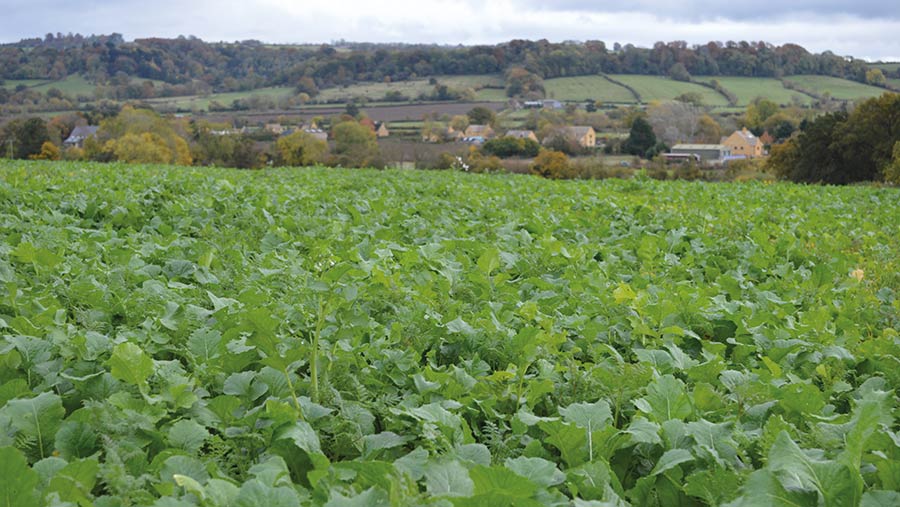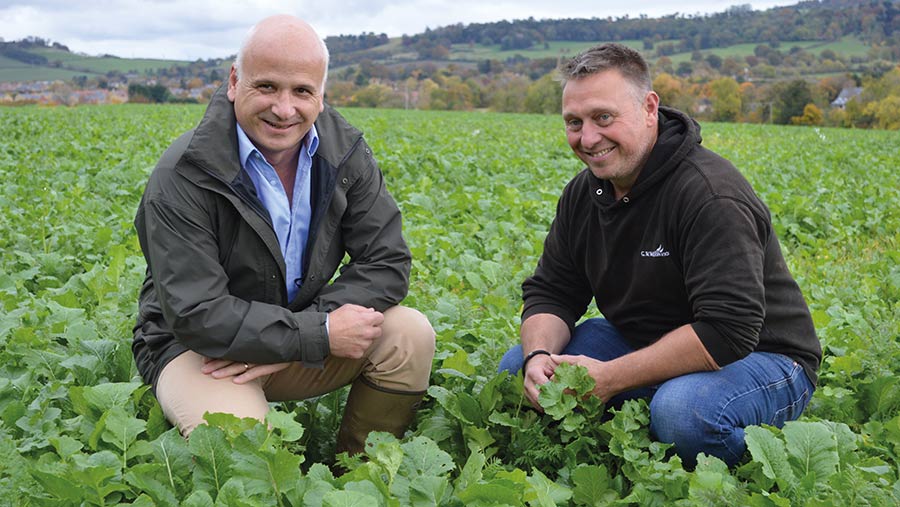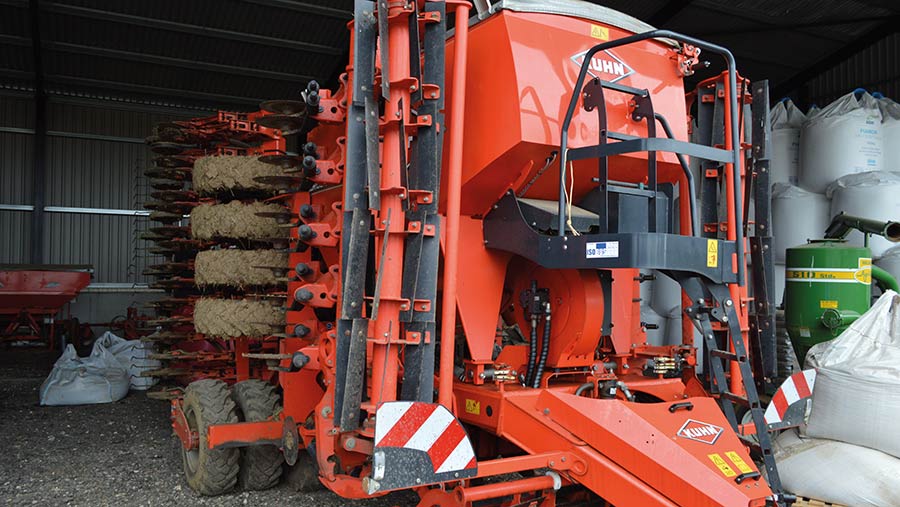How growers can plan with support worth only one-third of BPS
 © MAG/David Jones
© MAG/David Jones Arable growers looking at new “public money for public good” environmental schemes are likely to earn only one-third of their current area-based subsidies, which are being phased out.
This funding gap, as the Basic Payment Scheme (BPS) is withdrawn, will leave many looking for cost savings and alternative ideas to fill this yawning income hole.
Experts warn that new Environmental Land Management (ELM) schemes will be more onerous and costly to follow than BPS, and the rewards will be simply less rewarding.
See also: Further enterprises vital to fill BPS gap for Essex farm
Paul Pickford, business consultant working with agronomy group Agrii, says there will be big shortfalls unless the rates of payments are increased or new schemes added.
”If arable growers manage to get 30-40% of the old BPS payment from the new schemes, they will be doing well,“ he tells Farmers Weekly.
Soil health
Area-based BPS payments are being cut for the first time in 2021 and will end in 2028, while the new schemes – aimed at improving soil health and the environment – will involve extra costs and slimmer rewards.
The first tier of the three-stage ELM programme is known as the Sustainable Farming Incentive (SFI) and has four confirmed standards – arable and horticultural soils, improved grassland soils, moorland and rough grazing, and an annual health and welfare review. These are open to all farmers.
The arable standard, known as arable and horticultural soils, pays at two different rates, and Mr Pickford believes most growers should be able to claim the “intermediate” annual payment of £40/ha without any significant extra costs, where they are already growing cover crops.

Paul Pickford (left) and Paul Wilson © MAG/David Jones
“Any professional arable farmer should be able to qualify for this intermediate soils standard of £40/ha,” he says.
There is a second “introductory” level of £22/ha, while an advanced level, which was initially indicated at £60/ha, has been delayed until 2023.
This advanced level of payment will be available to those 938 farmers who have signed up for a three-year pilot scheme to help monitor SFI.
BPS cushion
This should give a cushion to the first fall in BPS in 2021, which was set at £233.30/ha in 2020 and tapers away with the last payments made in 2027 and is gone completely in 2028.
Mr Pickford points out the £40/ha payment, which will be paid for the first time in 2022, should offset some of the fall in BPS in 2022, but the larger the farm, the larger the shortfall.
There is a similar improved grassland soils standard again paying at two levels, with the highest being £58/ha, and this involves practices such as using herbal leys on 15% of land.
Summary of the arable and horticultural soils standards
Introductory level – £22/ha
- Test soil organic matter
- Undertake a soil assessment and produce a soil management plan
- 70% winter cover to protect soils. At least 70% of land must have a green cover over the winter months (Dec-Feb). This can include any kind of green cover, including autumn sown crops and weedy stubbles
- Addition of organic matter. Add organic matter to one-third of land each year. This can include any kind of organic matter, including sown green cover crops and chopping straw
Intermediate level – £40/ha
- Test soil organic matter
- Undertake a soil assessment and produce a soil management plan
- 70% winter cover to protect soils. At least 70% of land must have a green cover over the winter months (Dec-Feb). This must include land with multispecies green cover – covering at least 20% of total land
- Addition of organic matter. Add organic matter to one-third of the land each year. This will include multispecies green covers grown under the cover crop requirement above, plus the rest made up of other ways to add organic matter as per the introductory level
Advanced level
- There is a plan to add this standard from 2023 onwards, which is likely to include the use of no-till techniques
This intermediate level of £40/ha for arable soils is only just over 10% of BPS, but Mr Pickford believes that eventually growers will gain about £80-£90/ha, or 30-40% of BPS, including other standards that are yet to be confirmed to all farmers.
There will be extra costs such as testing soils in each field every five years for organic matter, and for establishing cover crops, chopping straw and applying manures if not already doing these practices.
He highlights that for good arable farms, the BPS payment equates to about 15% of output and that is often the level of profits. Hence, no BPS often means no profit.
So growers need to cut back in other areas to close the BPS funding gap, and Mr Pickford sees the obvious area being machinery, as labour, variable costs and rents are more difficult to cut.
The other two tiers of ELM – Local Nature Recovery and Landscape Recovery – are aimed more at farmer groups and organisations than individual farms and target specific environmental needs.
Payment levels in the Sustainable Farming Incentive (SFI) |
|||
|
Standard (£/ha) |
Introductory |
Intermediate |
Advanced |
|
Open to all farmers |
|||
|
Arable and horticultural soils |
22 |
40 |
60 (only pilot) |
|
Improved grassland soils |
28 |
58 |
70 (only pilot) |
|
Open to those in the pilot scheme |
|||
|
Arable and horticultural land |
28 |
54 |
74 |
|
Improved grassland |
27 |
62 |
97 |
|
Low or no input grassland |
22 |
89 |
110 |
|
Farm woodland |
– |
49 |
– |
|
Hedgerows |
£16/100m |
£21/100m |
£24/100m |
|
Waterbody buffering |
£16/100m |
£29/100m |
£34/100m |
Recoup shrinking BPS payment
Warwickshire farmer Paul Wilson is part of the SFI pilot scheme and is hoping to recoup some of his shrinking BPS payment on one farm.
He and his family are putting their 220ha holding at Lower Lodge Farm, near Alcester, into the SFI pilot scheme, as part of the 1,500ha of arable land they farm from heavy Warwickshire clays to Cotswold brash.
This farm was chosen for the scheme as it was ring-fenced, had some permanent pasture and plenty of hedges and trees.
An application was drawn up with the help of Mr Pickford to raise nearly £22,000 before any costs, compared with the farm’s BPS payment in 2020 of just over £51,000.
Advanced level
He has applied for the advanced level of the arable and improved grassland soils standards open to only those in the pilot, raising £60/ha for 200ha of arable land and £70/ha for 15ha of permanent pasture with 5ha of woodlands.
“We were already doing all the things needed to meet these arable and improved grassland soil standards so it made sense to apply,” he says.
This would bring in just over £13,000, without spending any significant extra money, while the rest was made up of five of the six standards again only available to the pilot scheme.
On the arable land standard, they went for the introductory level which only needs 5% of land taken out of production and put into bird food and wildflower mixes.
An advanced level of payment would have required 10% of land put into these mixes and 2% left in scrub, and this was considered too much for good arable land.
Intermediate level
The improved grassland is to be put into the intermediate level, chosen as the farm had some grass banks that can be utilised, while hedges, buffering margins and woodland are included in the plan. The only standard not included is the low- or no-input grassland.
By 2024, with the farm’s BPS cut in half to £25,000, the SFI scheme would bring in nearly £22,000 to help offset the BPS decline, but there would be a cost in terms of seed of £2,000-£3,000.

6m Kuhn Aurock direct-drill © MAG/David Jones
“BPS represents a massive chunk of income to replace, especially when yields are reaching a plateau,” he says.
As part of a plan for the future, the farm purchased a 6m Kuhn Aurock direct-drill to cut cultivation costs and fit in with the SFI’s aim of improve soil health.
SFI plan for GW Wilson and Sons (Lower Lodge Farm) |
||
|
Standard |
(£) |
Level |
|
Arable soils |
11,953.20 |
Advanced |
|
Improved grassland soils |
1,059.88 |
Advanced |
|
Arable land |
5,578.18 |
Introductory |
|
Improved grassland |
938.75 |
Intermediate |
|
Woodland |
514.50 |
Only one at £49/ha |
|
Hedges |
880.80 |
Introductory |
|
Buffering |
938.40 |
Advanced |
|
Total |
21,863.71 |
|

